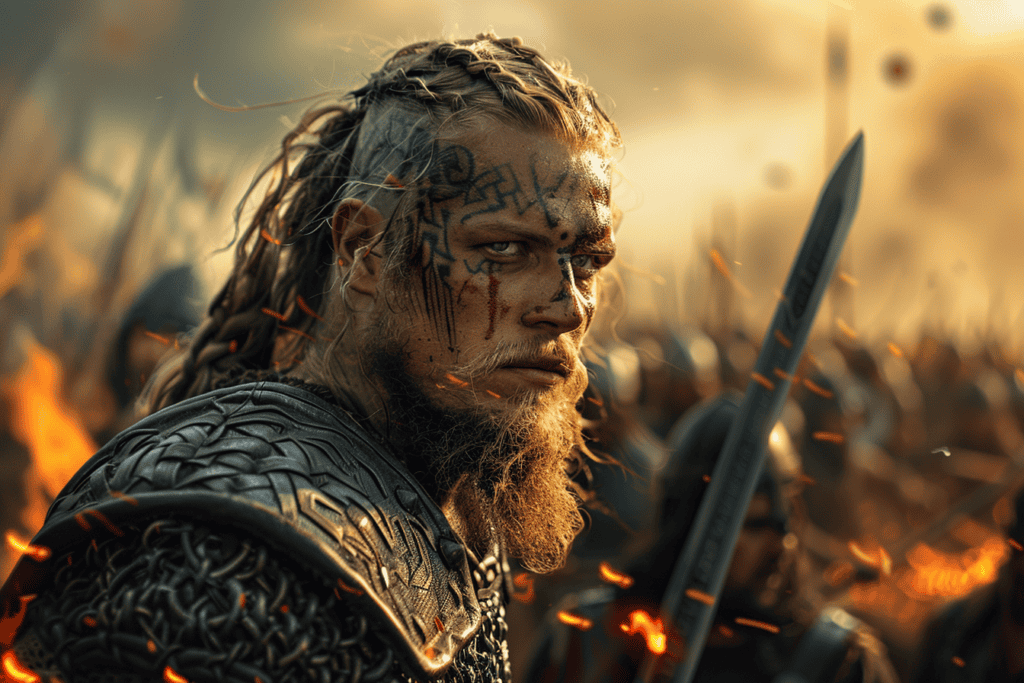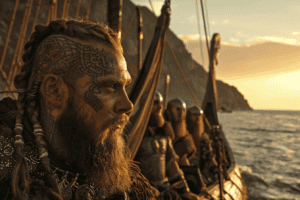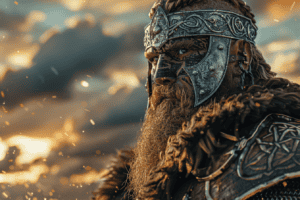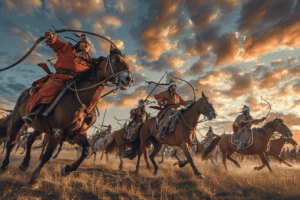Hvitserk Ragnarsson, one of the lesser-known but equally fascinating sons of the legendary Viking king Ragnar Lothbrok, lived a life marked by adventure, warfare, and a tragic end.
Historical records, though sparse, provide a glimpse into his life and his ultimate fate, painting a picture of a Viking warrior whose life was both heroic and tragic.

Hvitserk was known for his combat skills, and his involvement in battles between his brothers and other Viking leaders.
Despite his prowess in battle, Hvitserk’s life ended tragically. According to historical accounts, a rival Viking leader, Ivar the Boneless, captured him and held him captive for several years.
During this time, Hvitserk was said to have converted to Christianity and changed his name to Athelstan. However, his fate remained uncertain until the end of his life.
Hvitserk’s capture and death remain a topic of fascination for historians and Viking enthusiasts alike. In this article, we will explore the life of this legendary warrior and delve into the circumstances surrounding his capture and tragic demise.
Hvitserk Ragnarsson: A Brief History

Hvitserk Ragnarsson was born in the late 8th century as the youngest son of the legendary Viking leader, Ragnar Lothbrok, and his second wife, Aslaug Sigurdsdottir. Hvitserk was the brother of Ivar the Boneless, Bjorn Ironside, and Sigurd Snake-in-the-Eye.
He was born into a family of great warriors and leaders, and his mother was known for her clairvoyant abilities.
Hvitserk grew up in the Viking tradition, and like his brothers, he was a fierce warrior and leader. He inherited his father’s love for adventure and exploration, and he was always eager to embark on new journeys.
Alliance with Ivar the Boneless and the Great Heathen Army
Hvitserk was a key member of the Great Heathen Army, which was led by his brother, Ivar the Boneless. The army was a coalition of Viking warriors from Denmark, Norway, and Sweden.
It was formed to avenge the death of their father, Ragnar Lothbrok.
Hvitserk fought alongside his brother in many battles, including the famous Battle of York in 866 AD, where the Great Heathen Army defeated the Anglo-Saxon forces.
The victory marked a significant turning point in the Viking Age, and it established the Vikings as a formidable force in Europe.
Despite their successes, the alliance between the brothers was not always harmonious, and there were times when they clashed. Nevertheless, Hvitserk remained loyal to his brother until the end.
Siege of Kattegat and the Battle of York

After the death of their father, Ragnar Lothbrok, Hvitserk and his brothers continued their conquests in England.
They first set their sights on Kattegat, where they laid siege to the city. The battle was fierce, but ultimately, the Vikings emerged victorious.
With Kattegat secured, Hvitserk and his brothers set their sights on York. The Battle of York was a pivotal moment in the Viking invasion of England.
The Vikings were able to defeat the Anglo-Saxon army and capture the city. However, the victory was short-lived as the Anglo-Saxons soon launched a counter-attack and forced the Vikings to retreat.
The Invasion of Wessex and Mercia
Undeterred by their defeat at York, Hvitserk and his brothers continued their quest for revenge. They set their sights on Wessex and Mercia, two of the most powerful Anglo-Saxon kingdoms. The Vikings launched a surprise attack on Wessex, forcing King Alfred the Great to flee into the marshes of Somerset.
However, Alfred was not one to give up easily. He rallied his troops and launched a counter-attack, which culminated in the Battle of Edington. The battle was hard-fought, but ultimately, the Anglo-Saxons emerged victorious. The Vikings were forced to retreat, and Hvitserk and his brothers were forced to abandon their quest for revenge.
Downfall and Tragic Demise

Hvitserk’s life, filled with valor and conflict, met a tragic end. Historical accounts, though somewhat varied, provide a grim picture of his final days.
After years of battling and raiding, Hvitserk faced an overwhelming foe. According to the “Tale of Ragnar’s Sons” (Ragnarssona þáttr), he was captured by a powerful enemy force. When asked how he wished to die, Hvitserk chose to be burned alive on a pyre made of human remains.
This choice of death is both stark and symbolic, reflecting the harsh realities and brutal customs of the Viking Age. It also emphasizes Hvitserk’s acceptance of his fate and his warrior spirit, even in the face of inevitable death.
Legacy and Portrayal in Popular Culture

Hvitserk Ragnarsson is a historical figure from the Viking Age, but little is known about his life and deeds. The sagas and chronicles that mention him do not provide much detail, and it is unclear whether he was a real person or a legendary character.
However, the Vikings series on Amazon Prime Video has brought Hvitserk to the forefront of popular culture, portraying him as a complex and tragic figure.
The show’s depiction of Hvitserk has been controversial among historians and fans of the series.
Some have praised the actor’s performance and the writing for creating a compelling and sympathetic character, while others have criticized the show for taking liberties with historical accuracy and romanticizing the Vikings’ violent and brutal culture.
Impact on Modern Entertainment and Mythology
Despite the debate over its accuracy, the Vikings series has had a significant impact on modern entertainment and mythology. The show has inspired spin-offs, such as Vikings: Valhalla, and has popularized the Viking Age as a subject for movies, books, and video games.
Hvitserk’s character, in particular, has resonated with viewers. They have praised his journey from a conflicted and insecure warrior to a tragic and doomed hero. His relationship with his brothers, especially Ivar, has been a central theme of the series.
His struggles with faith, loyalty, and identity have made him a relatable and sympathetic character.
Overall, Hvitserk Ragnarsson’s legacy in popular culture is a testament to the enduring fascination with the Vikings and their mythology.
While the historical accuracy of his portrayal may be debatable, his impact on modern entertainment and his role in the Vikings series have cemented his place in the pantheon of Viking warriors and heroes.










Add Comment